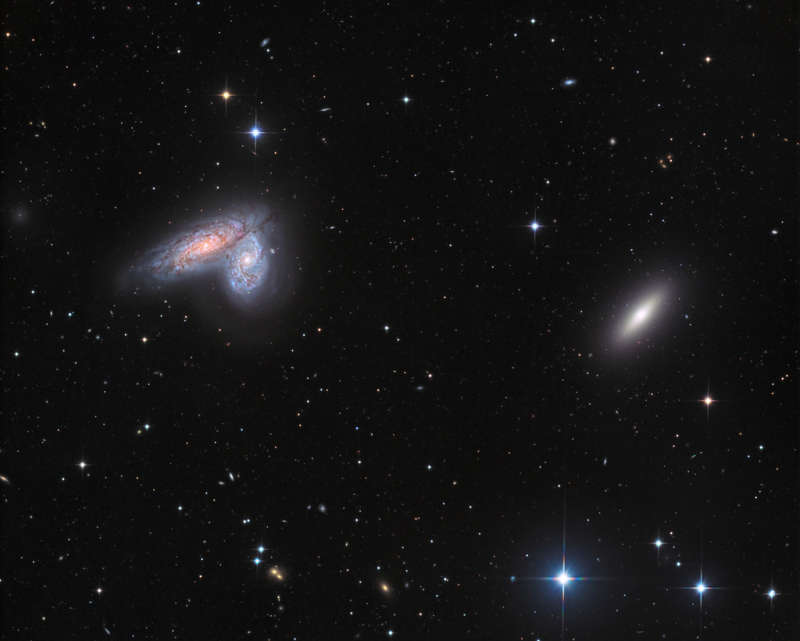
|
Credit & Copyright: CHART32 Team,
Processing -
Johannes Schedler
Explanation:
Spiral galaxy pair NGC 4567 and NGC 4568 share
this
sharp cosmic vista with lonely elliptical galaxy NGC 4564.
All are members of the large
Virgo Galaxy Cluster.
With their classic spiral arms, dust lanes, and star clusters,
the eye-catching spiral pair is also known as the Butterfly Galaxies or
the Siamese Twins.
Very close together, the galaxy twins don't seem to
be too distorted by gravitational tides.
Their giant molecular clouds are
known
to be colliding though and
are likely fueling the formation of massive star clusters.
The galaxy twins are about 52 million light-years
distant,
while their bright cores appear separated by about 20,000 light-years.
Of course, the spiky foreground stars lie within our own Milky Way.
|
January February March April May June July August September October November December |
| ||||||||||||||||||||||||||||||||||||||||||||||||
NASA Web Site Statements, Warnings, and Disclaimers
NASA Official: Jay Norris. Specific rights apply.
A service of: LHEA at NASA / GSFC
& Michigan Tech. U.
Based on Astronomy Picture
Of the Day
Publications with keywords: interacting galaxies - Virgo Cluster
Publications with words: interacting galaxies - Virgo Cluster
See also:
- APOD: 2025 March 12 Á NGC 772: The Fiddlehead Galaxy
- Peculiar Galaxies of Arp 273
- APOD: 2025 January 6 Á Colliding Spiral Galaxies from Webb and Hubble
- Shell Galaxies in Pisces
- APOD: 2024 July 15 Á The Tadpole Galaxy from Hubble
- Unraveling NGC 3169
- APOD: 2024 March 20 Á The Eyes in Markarians Galaxy Chain
